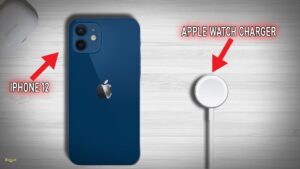Battery acid can be quite corrosive and potentially hazardous if not handled properly. So, what should you do if you find yourself dealing with a battery leak or spill? The answer is simple: learn how to neutralise battery acid. By understanding the steps to safely neutralise battery acid, you can protect yourself and prevent further damage. In this article, we will guide you through the process, providing you with a practical solution that you can use whenever the need arises. So, let’s dive in and explore how to neutralise battery acid effectively.
How to Neutralize Battery Acid: A Complete Guide
In this comprehensive guide, we will explore the process of neutralizing battery acid safely and effectively. Battery acid, also known as sulfuric acid, is highly corrosive and can be a serious safety hazard if mishandled.
Battery acid is commonly found in automotive batteries, as well as in other types of batteries used for various applications. Accidental spills or leaks can occur during maintenance, transportation, or even when batteries are damaged. It is essential to take the necessary precautions and know the proper methods to neutralize battery acid to prevent accidents and minimize environmental damage.
The Dangers of Battery Acid
Before we delve into the process of neutralizing battery acid, it is crucial to understand the potential dangers associated with it. Battery acid is highly corrosive and can cause severe burns if it comes into contact with the skin or eyes. Inhalation of battery acid fumes may also lead to respiratory problems and other health issues.
Furthermore, battery acid is harmful to the environment. If spilled or improperly disposed of, it can contaminate soil, water sources, and harm plant and animal life. Therefore, it is essential to handle and neutralize battery acid with caution.
Precautions to Take Before Neutralizing Battery Acid
Before attempting to neutralize battery acid, it is important to take certain precautions to ensure your safety. Here are some steps to follow:
1. Personal Protective Equipment (PPE): Prior to handling battery acid, always wear appropriate protective gear, including safety goggles, gloves, and a lab coat or apron. This will help protect you from potential splashes or spills.
2. Ventilation: Work in a well-ventilated area to minimize exposure to battery acid fumes. If possible, perform the neutralization process outdoors or in a dedicated workspace with proper ventilation.
3. Containment: Ensure that the battery acid spill or leak is contained and isolated from other areas. Use absorbent materials like sand or a chemical spill kit to create a barrier around the affected area.
Neutralizing Battery Acid: Step-by-Step Guide
Now that you’ve taken the necessary precautions, let’s dive into the step-by-step process of neutralizing battery acid:
1. Assess the Situation: Evaluate the extent of the battery acid spill or leak. If it is a small spill on the battery itself, you can neutralize it directly. However, if it has spread to surrounding surfaces or materials, it is crucial to contain and isolate the affected area before proceeding.
2. Neutralizing Agents: There are several commonly used substances that can neutralize battery acid effectively. These include baking soda (sodium bicarbonate), a weak alkaline solution, or commercial acid neutralizers specifically designed for battery spills. Choose the option most readily available to you.
3. Mixing the Neutralizing Solution: If using baking soda, mix it with water to create a paste-like consistency. For commercial acid neutralizers, follow the instructions provided on the product packaging. Ensure you are wearing your PPE throughout this process.
4. Applying the Neutralizing Solution: Carefully apply the neutralizing solution directly to the battery acid spill or leak, focusing on the affected areas. Use a brush or sponge to gently agitate the solution and facilitate the neutralization process. Avoid splashing or spreading the acid while working.
5. Wait for Neutralization: Allow the neutralizing solution to interact with the battery acid for a sufficient amount of time, as indicated by the product instructions or industry standards. This time period typically ranges from a few minutes to half an hour.
6. Absorb and Dispose: After the neutralization process is complete, use absorbent materials, such as paper towels or rags, to carefully blot and remove the remaining solution. Dispose of these materials as hazardous waste according to local regulations. Do not rinse the area with water immediately after neutralizing, as residual acidity may still be present.
Additional Tips and Considerations
Here are some additional tips and considerations to keep in mind when neutralizing battery acid:
- Never use vinegar or other acidic substances to neutralize battery acid, as this will only exacerbate the problem.
- Always follow the manufacturer’s instructions when using commercial acid neutralizers, as different products may have variations in application and contact time.
- If dealing with a large battery acid spill or one that has contaminated a significant area, it is advisable to contact professional hazmat services for proper cleanup and disposal.
- Regularly inspect and maintain batteries to detect any leaks or damage early on, minimizing the risk of a larger acid spill.
- Ensure that any spill cleanup materials, including gloves and rags, are disposed of safely in accordance with local regulations.
Neutralizing battery acid is a critical task that should be approached with care and knowledge. By following the proper precautions and using appropriate neutralizing agents, you can mitigate the risks associated with battery acid spills or leaks. Remember always to prioritize safety and environmental responsibility when handling battery acid.
Frequently Asked Questions
How can I safely neutralise battery acid?
To safely neutralise battery acid, follow these steps:
What materials do I need to neutralise battery acid?
You will need the following materials to neutralise battery acid:
How do I protect myself while neutralising battery acid?
When neutralising battery acid, it is important to protect yourself by following these safety precautions:
Can I use water to neutralise battery acid?
Yes, water is commonly used to neutralise battery acid. However, it is essential to follow the correct procedure:
What should I do if battery acid spills on my skin or clothing?
If battery acid spills on your skin or clothing, take immediate action with these steps:
Is it safe to dispose of neutralised battery acid in regular trash?
No, it is not safe to dispose of neutralised battery acid in regular trash. Follow these proper disposal guidelines:
Final Thoughts
To neutralize battery acid, there are several effective methods you can try. One option is to use baking soda, a common household ingredient. Simply mix baking soda with water to create a paste, and then apply it to the affected area. Another solution is lemon juice, which can help neutralize the acid. Apply fresh lemon juice directly to the battery acid spill and let it sit for a few minutes before wiping it away. Remember to wear protective gloves and eyewear while handling battery acid. Additionally, it’s important to ensure proper disposal of any materials used to neutralize the acid. Overall, by following these simple steps, you can effectively neutralize battery acid and prevent potential hazards.



